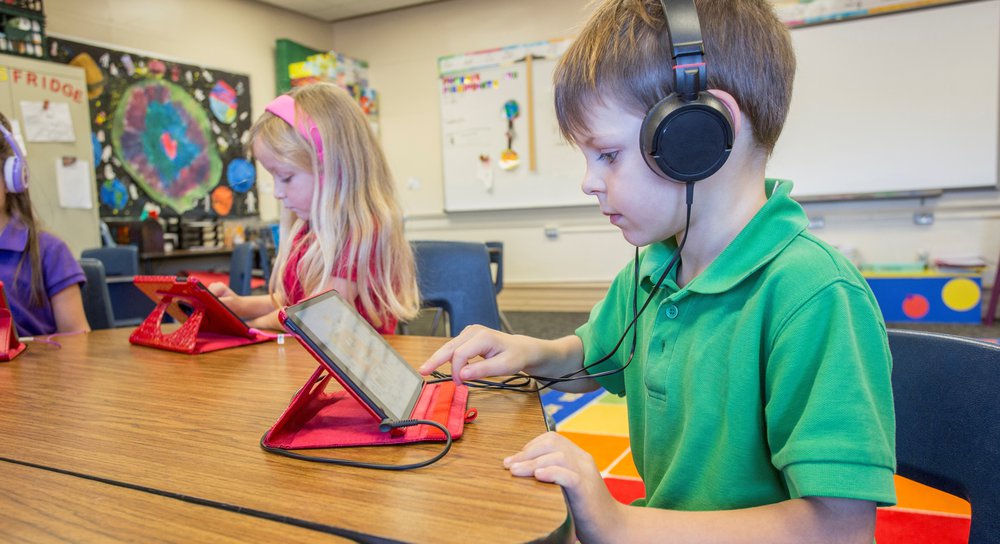Diversity in education usually refers to the effects of gender and ethnicity on student performance. While those effects are important, what’s also crucial is the diversity of preparedness, that is, what specific grade level—on, at, or below—a student or group of students is performing at in any given classroom. Ask any elementary school teacher and they will confirm that there is in fact a great deal of heterogeneity among students in an average classroom.
Given students’ differences on cognitive as well as cultural and social factors, the best way to develop knowledge, skills, and abilities for one student is not necessarily the best for another. This, of course, is one of the major challenges educators like myself face today.
Yet, in the Marysville School District, optimizing literacy learning experiences for our very diverse student population has become a reality. We have delivered some extraordinary results—with 88 percent of our students ending the 2015-2016 school year reading at or above grade level in the Lexia Reading Core5 program, despite having started the school year with only 36 percent working at or above grade level. In fact, by the end of last school year, 71 percent of our students reached their end-of-year program benchmarks.
Nonetheless, we couldn’t have done it without the help of this proven technology program, our incredible school administrators and classroom teachers, and a dedicated student population determined to do better.
Honing Literacy Through Personalized Instruction and Support
To reach those incredible gains, we needed to alter our course. I realized our elementary schools needed a program that would easily identify skill gaps and provide real-time progress monitoring to guide and support differentiated and personalized instruction.
By selecting this personalized learning program, that is both student-driven online and teacher-directed through small-group instruction, we now support our elementary school teachers in providing differentiated literacy instruction for all of our pre-K–5 students—regardless of their abilities.
And when I use the phrase “regardless of their abilities,” here’s what I mean. While our on-target students work independently online at their own pace, the teachers support our struggling readers using the program’s multisensory, offline lessons and activities. Once a student has mastered a skill online, the teacher assigns the offline “skill builders” to increase automaticity and expand expressive skills. Both our teachers and principals in Marysville track student progress in real time, catching skill gaps as they emerge and adjusting their instruction accordingly.
This explicit/systematic approach has given us a way to personalize learning in six areas of reading instruction (i.e., phonological awareness, phonics, fluency, comprehension, etc.). Targeting skill gaps as they emerge and providing our teachers with the data and student-specific resources they need for individual or small-group instruction, have been key to the dramatic literacy gains we are seeing.
Now our teachers prioritize and plan instruction based on the program’s ability to both predict students’ year-end performance and prescribe the amount of instructional intensity required to improve the likelihood of reaching end-of-year benchmarks.
Progress Monitoring Increases Student Success and Confidence
With the program selected and usage running high, I asked the vendor to conduct an analysis; we found dramatic results for our district in both Core5 and with Michigan’s M-STEP assessment. As I mentioned earlier, the analysis identified a strong relationship between reaching benchmarks in the program and in-class proficiency. This bears repeating: 88 percent of our students ended the 2015-2016 school year reading at or above their grade level, despite starting the school year with only 36 percent working at or above grade level.
Our principals and teachers value the impact the program’s progress monitoring data has had on their success with M–STEP. One principal, Kathleen Quain, at Morton Elementary, told me, “Knowing there’s a strong correlation between M-STEP and Core5, we can rely on the program’s progress monitoring data.”
For the first time, Marysville educators have the ability to adjust their instruction based on real-time progress monitoring. And, the ability of our teachers to provide differentiated instruction based on their students’ specific needs resulted in more than improved grades.
Another principal, Jennifer Leishman, at Washington Elementary, shared this: “We love seeing how the data reveals growth, but even more meaningful is how our kids have become not only stronger readers, but more confident students.”
Upending the State’s Top-to-Bottom School Rankings
The state’s rankings measure a school’s performance across English language arts, math, social studies and science. I credit the use of this literacy program, which not only intensifies, but also accelerates literacy skills development for students, with impacting our schools’ performance overall.
I’ve always said that literacy is the foundation for learning. I have no doubt that our students’ use of this personalized literacy program helped to dramatically improve our state ranking scores. For example, one of our schools, Morton Elementary, was named a “Reward School” by the state for “Beating the Odds” or outperforming the school’s predicted ranking. They saw their state ranking scores skyrocket to the 87th percentile in 2015-16 from the 50th percentile in 2013-14. Another school, Gardens Elementary, also became a “Reward School” by shooting up from the 82nd to the 95th percentile, which placed them in the “Top 5” percent of schools in Michigan. This has never happened before in Marysville!
Of course, an important aspect of our success with the student literacy gains has been my belief in holding my educators accountable. I was clear about setting goals and expectations of 100 percent usage of the technology program. I communicated regularly with the principals and teachers about their use of the program and that helped them drill into the rich data that came from the Core5 program.
It does take a village to attain the academic outcomes we desire, and I believe we have given students, teachers, and administrators the right resources necessary to significantly, effectively, and rapidly address the demands of diverse learners around early literacy skills.











